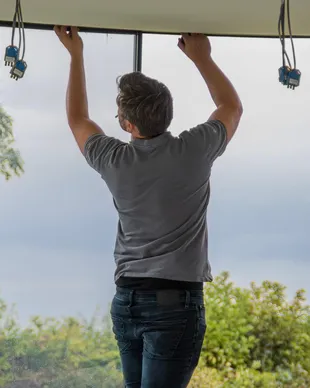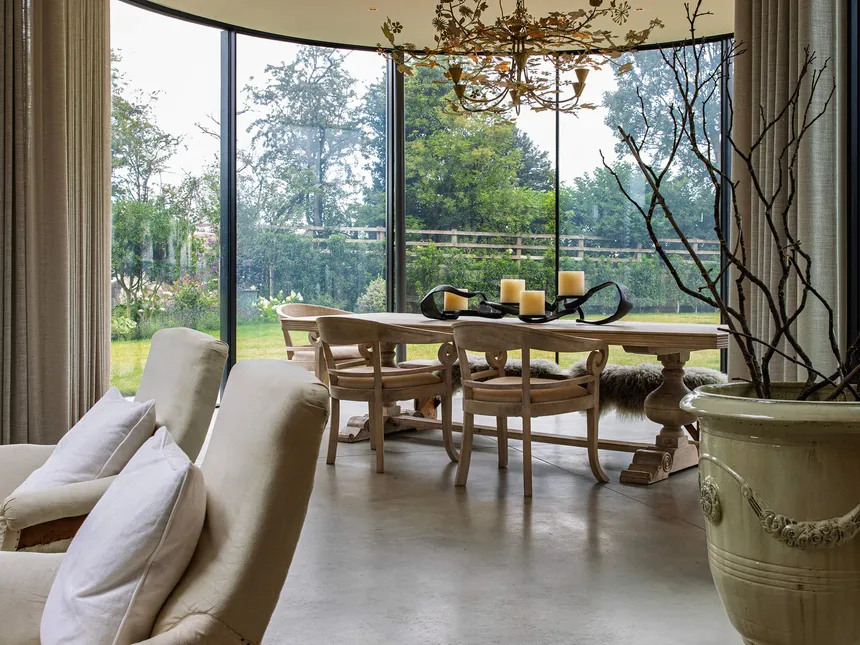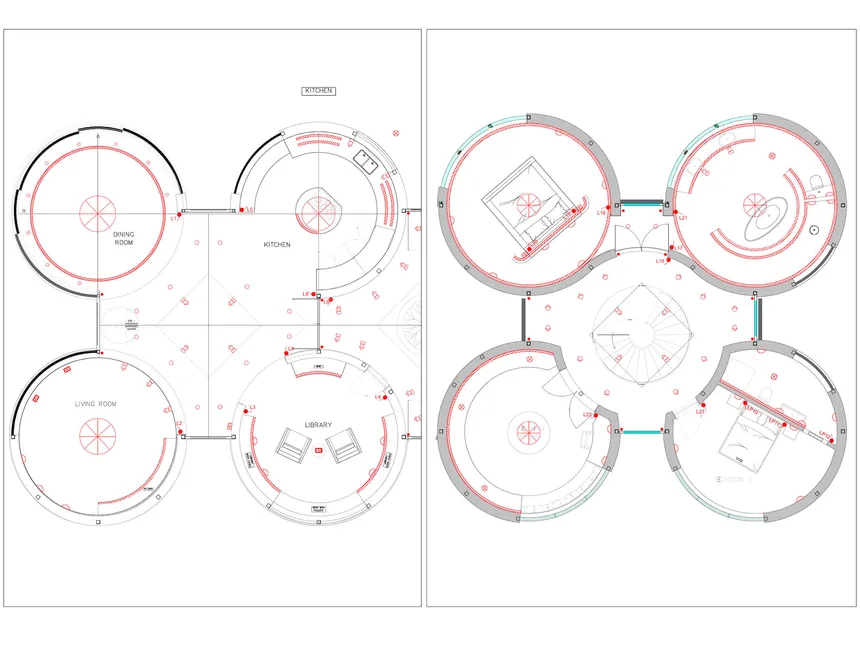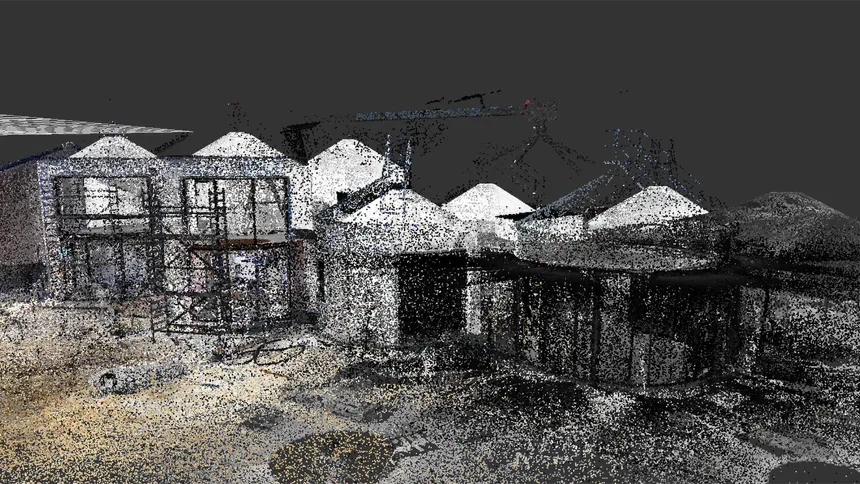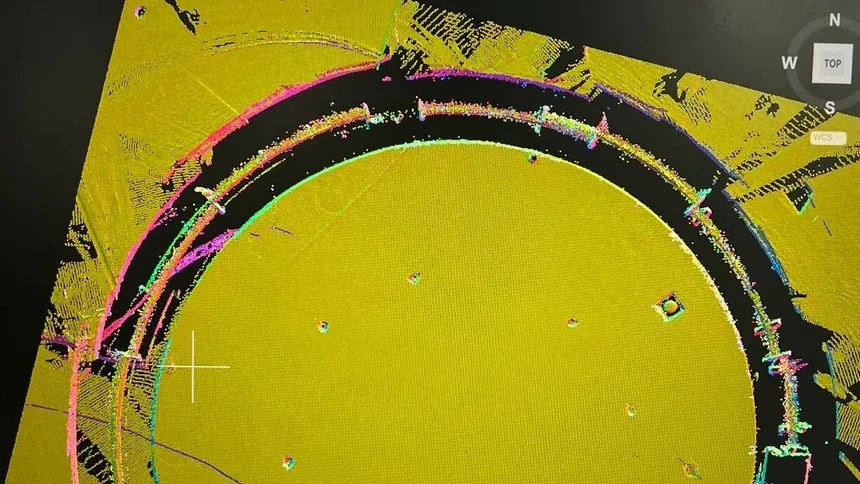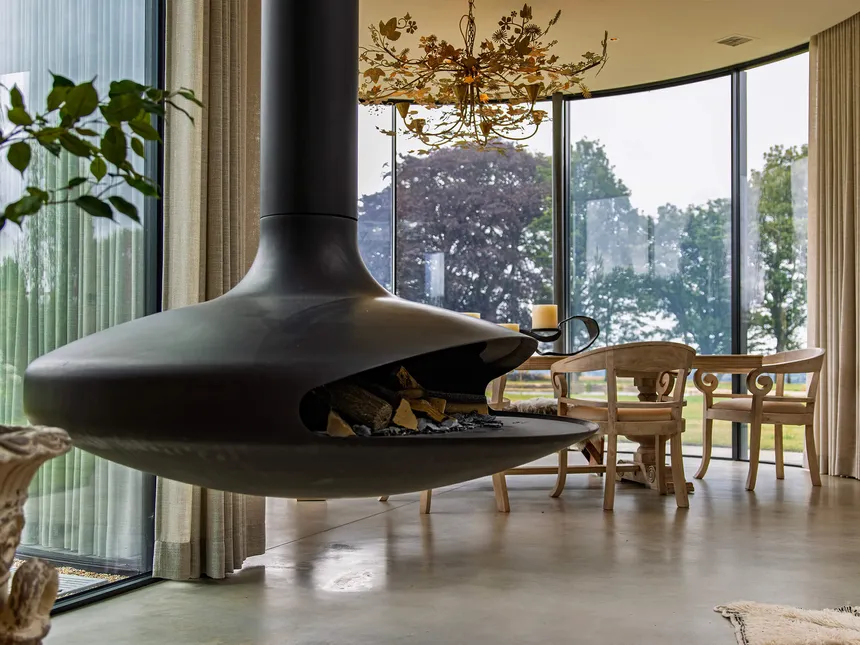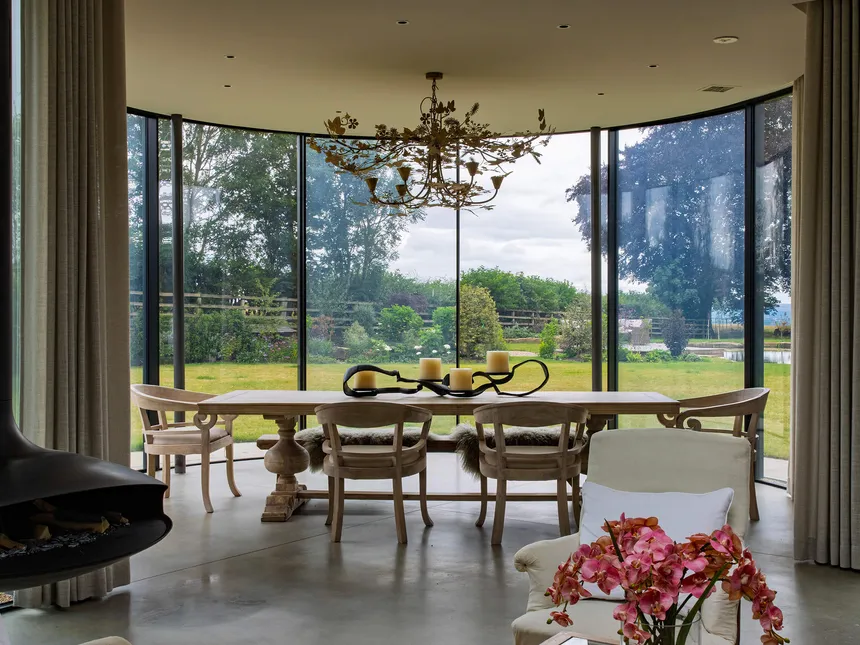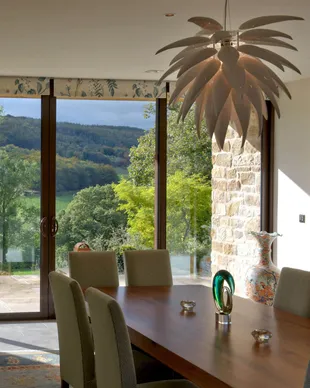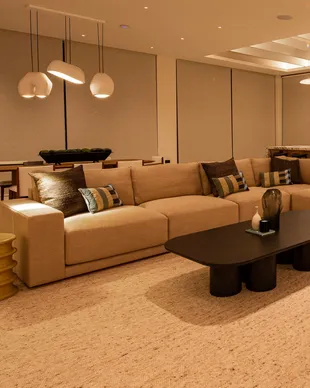We're in awards entry season. Lighting publishers, hospitality publishers and lighting and technology suppliers are all inviting entries for their own particular awards. Residential lighting design isn't particularly well served apart from the darc awards - which we will be entering with our 2025 projects next year - but Lutron's Excellence Awards warrant a look. We've completed and photgraphed a number of spectacular projects over the last few months. We thought the Lutron awards presented a great opportunity to see if we could get more of our work out there. Revisting projects and digging into the details for an award submission helps remind you just how extraordinary some of our projects can be.
We've written about The Silos before. It's a unique luxury residential development in North Yorkshire constructed around an array of former agricultural grain silos. The house and adjoining barn total 430m² in landscaped gardens in beautiful rolling countryside. The Silos was developed speculatively for resale and Brilliant Lighting worked closely with the family team developing the site — the builder developer owner and his interior designer daughter — to create something magical. We designed a scheme featuring beautiful lighting, discreet whole house control and elegant window treatments to deliver a very special experience for any prospective purchaser.
It's a uniquely challenging space; there is barely a straight line anywhere. The silo ceilings are mostly open to the apex, all the rooms are round, the windows and doors are vast. The brief from the developer was to deliver a "James Bond" experience.
A challenging space for electric curtains and blinds
The buildings posed particular challenges which were further compounded by logistical considerations. The most obvious challenge is the size and shape of some of the glazed areas, and that we were trying to develop shading solutions for them against huge time pressure and in a fast changing context.
The interior designers 'brief' and the architectural constraints for the curtains were:
- Some curtain tracks - both straight and curved - were to be located in ceiling recesses/coffers, and could therefore be white and with ceiling brackets.
- The largest window, the dining room, had a 12.5m long ceiling recess, of which the end 500mm length was too narrow to accommodate a Lutron motor.
- The recesses generally were narrower than ideal.
- Some curtains, curved, were to be face fixed, and needed to be either black track or a bronze pole, with aesthetically pleasing black or bronze wall brackets.
- The brackets needed to be adjustable to cope with the any vagaries in the curved wall finish.
- Where curtains met - e..g., where a curved window met a straight window on a different plane, the tracks needed to be designed in a way to make the curtain fabric look continuous through them both.
- Because this was a speculative development, the developer wanted to install enough motorised tracks to give the 'James Bond' effect, but forcommercial reasons didn't want to do motorised tracks everywhere to start with.
- The motorised tracks and manual tracks needed to look identical.
Finding solutions
We starting exploring solutions for the window treatments in January 2024. At that point our understanding was that:
- The longest track that Lutron could do without a splice was 5486mm, so c.11m track length in total. We needed longer than this.
- A splice can't be curved, so couldn't be used on a continuously curved track such as these.
- Aesthetically pleasing and black wall brackets weren't available, and so any face fixed tracks had to be poles to make them work aesthetically.
We started working with a UK curtain pole company who worked with a Lutron approved track fabricator to see if, using their UK manufacturing facilities, it was possible to have Lutron curtain tracks and poles that met the criteria. Over a c.6 month period we were told it was possible to manufacturer curved poles up to the required length, then that it was only partly possible, then finally not possible at all.
During this period we were also trying to bottom out how we would actually template the tracks/poles, and how to solve the issue of the ceiling recesses being too narrow.
The templating was challenging because:
- Building a round house out of intrinsically square materials (eg; plasterboard) is difficult, and we needed to know if any parts of the ceiling recesses or walls for face fixing weren't perfectly round.
- We had nothing against which to measure: at this point the glass windows weren't in, and even if they had been in we needed a 'cut through slice' of what the wall or ceiling looked like 3m above the floor.
The solution was to work with a surveying firm with a 3D Laser scanner, to scan the space. We then needed to turn this 3D collection of dots in to a cut through slice at the right point, and to create 2D CAD plans by knitting together the dots in the right place. From this we created the CAD files for the tracks/poles. We've written about the electric curtains installation separately here. A potentially stressful day but a great result when the install went perfectly.
Future expansion was a key requirement
We gave particular attention was given to future expansion. The client was keen that any future owner should be able to extend the Lutron experience into all areas of the property. There is substantial provision for extending the window treatments, external lighting and into the currently undeveloped barn.
The Silos has recently been sold and we are working with the delighted new owners on Phase II. That will see the extension of Lutron curtain tracks to all the windows in the Silos area and expansion of full Lutron control into the large barn space. The barn will house a pool, golf simulator, bar and lounge as well as a showpiece garage. It's a brilliant project to work on and we're delighted that we can complete the work by extending the electric curtain tracks and blinds across the property
Update: 9th October 2025

We're delighted to have been shortlisted for this project in the 2025 Build It Awards in the Best Home Technology Product or Installation category. Looking forward to the Awards dinner on the 28th November.
